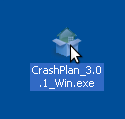Android 5.1 – Best New Features For all you Lollipop-ers out there, Android simply started pushing out its first real redesign to its Material Design-dressed OS, and dissimilar to a few overhauls that are generally only for “soundness and execution,” Android 5.1 really accompanies some stuff you’re without a doubt going to need to think about.
Android 5.1 – Best New Features

Welcome back, Silent Mode
For all its magnificent increases and outline updates, Google really made Android all the more irritating in one particular case-they took away quiet mode. This implied you could no more simply get LED warnings without your telephone buzzing or making some capable of being heard sound. C’mon, Google. That is amateur. Fortunately, they’re correcting the boat with android 5.1 and bringing back the quite cherished peculiarity. Presently you can overlook your loved ones in peace !
Also Check: How To Track IMEI Number Without A Phone
Passing to Crappy Wifi!
There’s an open wifi signal that saturates the dividers of my loft and makes uniting with the web a bad dream. Each time companions come over they think they have a sign, just to understand that nope. Nada. Nothing. At the same time! Android 5.1 fixes the issue. Presently, when you join with one of these ne’e- do-well systems, your telephone will recall this bum association like the horrible bad dream that it is and won’t auto-unite with that system later on. It’s a little gimmick, however an awesome one-and one that I need in each and every keen gadget I claim.
Hone Safe Browsing
Notwithstanding verifying you never get an undesirable wifi system, Google might likewise be dealing with a VPN benefit so you can scan arranges all the more safely. This is still in talk y region, yet Pocketables found another application concealed in the All Apps organizer called “Google Connection Services.” After popping it open, the application welcomed them with “To help secure you on open Wi-Fi systems, your information will be transmitted safely through a Google VPN.” Considering this was found on a Nexus 6, as far as anyone knows the main gadget (at first) that will be good with Google’s forthcoming remote administration, its conceivable that Google is holding up for administration that to take off first. In any case, super slick peculiarity!
Rehearse Safe Smartphoneing
Google is likewise upping its against robbery amusement, in any event for Nexus 6 and 9. As indicated by Android Police, another against burglary gimmick would make it troublesome for an eventual cheat to a.) supplant your record as an essential record b.) include any records they could call their own, and c.) get to the telephone on the off chance that they wipe the telephone and attempt to login with their own particular creds. In any case, at this time the rollout appears to be really limited. Ideally, Google will beauty more cell phones with this peculiarity later on. Then again in any event, legacy Nexus gadgets.
Warnings Are Now Even Smarter
Android 5.0 let you hush most, if not all, your notices set for sure down times. Presently, Google cleverly executed an “until next caution” choice, so now you’ll have the capacity to keep individuals from irritating you once you sent an alert and you wake up or do whatever. This is something worth being thankful for. This will help me keep companionships.













































